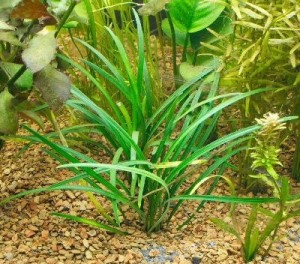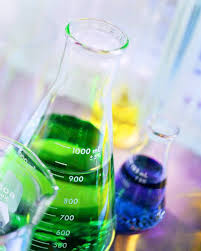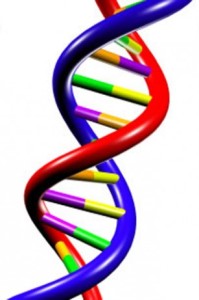The field of chemistry is basically categorized into five main branches with the other types of chemistry typically falling into one of these branches. Here is a list of those five main categories with an explanation of what each one studies and other types of chemistry that fall into each branch.
Organic Chemistry
 Organic chemistry is basically the study of life. It involves the study of compounds that contain carbon, which is one of the basic structures of life. It also studies the composition of structures in life forms to gain a better understanding of what creates life and how it continues to form and develop.
Organic chemistry is basically the study of life. It involves the study of compounds that contain carbon, which is one of the basic structures of life. It also studies the composition of structures in life forms to gain a better understanding of what creates life and how it continues to form and develop.
At one time, organic chemistry only including those compounds that were created by living organisms. However, scientists have learned that it is now possible to create compounds through artificial means. It wasn’t until 1828 when scientists realized that this could happen because urea was created by inorganic substances. This changed the way they thought about organic chemistry from then on.
Currently, there are at least 6 million unique organic compounds that have been identified. Despite the numerous compounds and complexity of this branch of chemistry, it is essential to our everyday lives. Organic compounds make up almost everything we encounter during our day, including the products that we use for cleaning as well as the foods that we eat.
Organic chemistry is used for creating other things, such as medications, plastics, clothing and insecticides, just to name a few things. But the list goes on and on about what the field of organic chemistry produces for society. There are several career fields that require an understanding of organic chemistry, including dentists, veterinarians, doctors, pharmacists, chemical engineers and more.
Inorganic Chemistry
This branch of chemistry deals with inorganic compounds, which are typically compounds that do not contain a combination of hydrogen and carbon bonds. This means that they are not biological. Essentially, inorganic chemistry covers everything that is not covered by organic chemistry, although there is a great deal of overlapping in both branches. Some of the topics that are covered under the branch of inorganic chemistry include pigments, medicine, fuel, agriculture and materials science, among others.
The compounds used in inorganic chemistry typically have high melting points and either low or high conductivity properties. Some of the products in which inorganic chemistry is used include chlorine, ammonia, titanium dioxide and others.
People who work in the field of inorganic chemistry often work in a wide range of settings. You might find them making microchips for computers or in a mine. They often look for ways to recover metals from streams of waste or they will be found working in government labs or academic institutions.
Analytical Chemistry
 Analytical chemistry deals with studying what chemical compositions are made of. Scientists who study analytical chemistry find information about a compound’s structure in order to solve problems and ensure safety when using these materials.
Analytical chemistry deals with studying what chemical compositions are made of. Scientists who study analytical chemistry find information about a compound’s structure in order to solve problems and ensure safety when using these materials.
Before the 1850s, analytical chemistry focused on identifying compounds and elements by researching their attributes. But the flame emissive spectrometry, which was invented by Robert Bunsen in the 1850s, changed the way scientists conducted analytical chemistry.
In addition to the flame emissive spectrometer, other inventions and discoveries were made to help make the separating process easier to identify compositions in compounds. Chromatography was used in various forms for working with liquid, paper and gas.
Analytical chemists put their knowledge to use in many ways to solve problems in various areas of chemistry. They use their findings to do such things as assure the quality of the water, medicines and foods that we eat. They help doctors diagnose various diseases with their research and analytical skills. They perform a wide variety of analyses on different levels and on different precuts and they interpret that data so it is useful to scientists and other professionals.
Physical Chemistry
The idea of physical chemistry concerns itself with interpreting chemistry in terms of using some of the principles of physics. It combines the sciences of physics and chemistry and uses physics to account for the many phenomena that is found in chemistry.
There are several disciplines usually in the field of physical chemistry, but the boundaries are not very clear. Thermodynamics is one of the topics covered under physical chemistry. Although it may seem like it is more about physics, thermodynamics also studies the way that chemical reactions produce heat and work.
Thermochemistry is another form of physical chemistry as it is a branch of thermodynamics. It focuses on the amount of heat that is generated or needed by chemical reactions. Other disciplines within this branch of chemistry include electrochemistry, which is the study of how a chemical reaction produces electricity, quantum chemistry, and chemical kinetics, among other disciplines.
Biochemistry
 Biochemistry basically combines the fields of biology with chemistry. It studies the reactions and the various chemical processes that occur in living things. Although it is a combination of both of these disciplines, it focuses more attention on the chemistry side rather than the biological side.
Biochemistry basically combines the fields of biology with chemistry. It studies the reactions and the various chemical processes that occur in living things. Although it is a combination of both of these disciplines, it focuses more attention on the chemistry side rather than the biological side.
The branch of biochemistry places a great emphasis on what happens at the molecular level. It studies what goes on inside our bodies, including the cells, lipids and proteins. Biochemistry also looks at how our cells talk to each other in situations where the body is fighting a sickness or when it is growing and maturing.
There are several disciplines included under the branch of biochemistry, including microbiology, genetics, medicine, plant science and forensics. It is one of the fastest growing fields in terms of technology and knowledge in the last 100 years.
Scientists who work in the field of biochemistry often conduct experiments to better understand how life works and give us a better understanding of diseases and health. They work with other scientists and professionals in different areas, including physicists, healthcare professionals, engineers and even policy makers. You can find them working in places ranging from hospitals to universities to cosmetics and in a forensic crime research lab, among many other places.